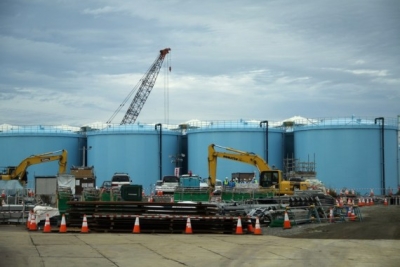Tokyo: The Japanese government and the International Atomic Energy Agency (IAEA) Monday met to discuss the country’s controversial plans to release radioactive water from the crippled Fukushima Daiichi nuclear plant into the Pacific Ocean, despite local and international opposition.
The discussions were held between representatives from the Ministry of Economy, Trade and Industry, the Foreign Ministry, the stricken plant’s operator Tokyo Electric Power Company Holdings Inc (TEPCO) and the IAEA task force headed by Gustavo Caruso, director and coordinator at the IAEA’s Department of Nuclear Safety and Security, reports Xinhua news agency.
The task force is due to stay in Japan through Friday and on Tuesday is slated to conduct safety reviews at the plant that had its key cooling functions knocked out by a massive earthquake-triggered tsunami in 2011, causing multiple core meltdowns in what continues to be the worst nuclear catastrophe since the Chernobyl nuclear crisis in 1986.
Caruso, in the meeting said that the task force will conduct its survey in an “objective, credible and science-based manner and help send a message of transparency and confidence to the people in Japan and beyond”.
Keiichi Yumoto, director general for nuclear accident disaster response at the Industry Ministry, added: “We would like to ask for a strict and transparent evaluation.
“It is crucial to receive the evaluation from the objective international body, as there is safety concern among the public over the planned discharge of treated water.”
The IAEA has said that the results of its survey will be made into a report by the end of the year, with a Ministry official stating that the results will also be shown in the discharge plan’s deliberation, which will be submitted by Japan’s Nuclear Regulation Authority NRA from TEPCO.
Much to the chagrin of the international community, Japan unilaterally decided in April last year that it plans to release radioactive water that has accumulated at the crisis-hit plant into the Pacific Ocean.
The toxic water, stored in tanks at the plant in Japan’s northeast, is expected to soon reach capacity.
The tainted water the Japanese government plans to release into the Pacific Ocean contains radioactive tritium as a result of being used to cool down melted nuclear fuel at the plant in Fukushima Prefecture.
The government’s plan is to release the radioactive water through a tunnel under the seabed into the Pacific Ocean roughly 1 km away from the stricken plant. The controversial plan is proposed to begin in the spring of 2023, much to the consternation of local fisheries and the international community.
Japan’s fisheries industry has voiced its ardent opposition to the plan, as it will almost certainly further damage the industry’s reputation.
Moreover, some of Japan’s closest neighbours have voiced strong concerns over the plan as have a number of worried countries from further afield.
Japan’s government had been considering a number of feasible alternative plans other than its unilateral proposal to just dump radioactive water into the Pacific.
These options included injecting the toxic water deep into the ground, releasing it into the atmosphere after vaporising it, or making it into a solid state and burying it underground.
IANS
